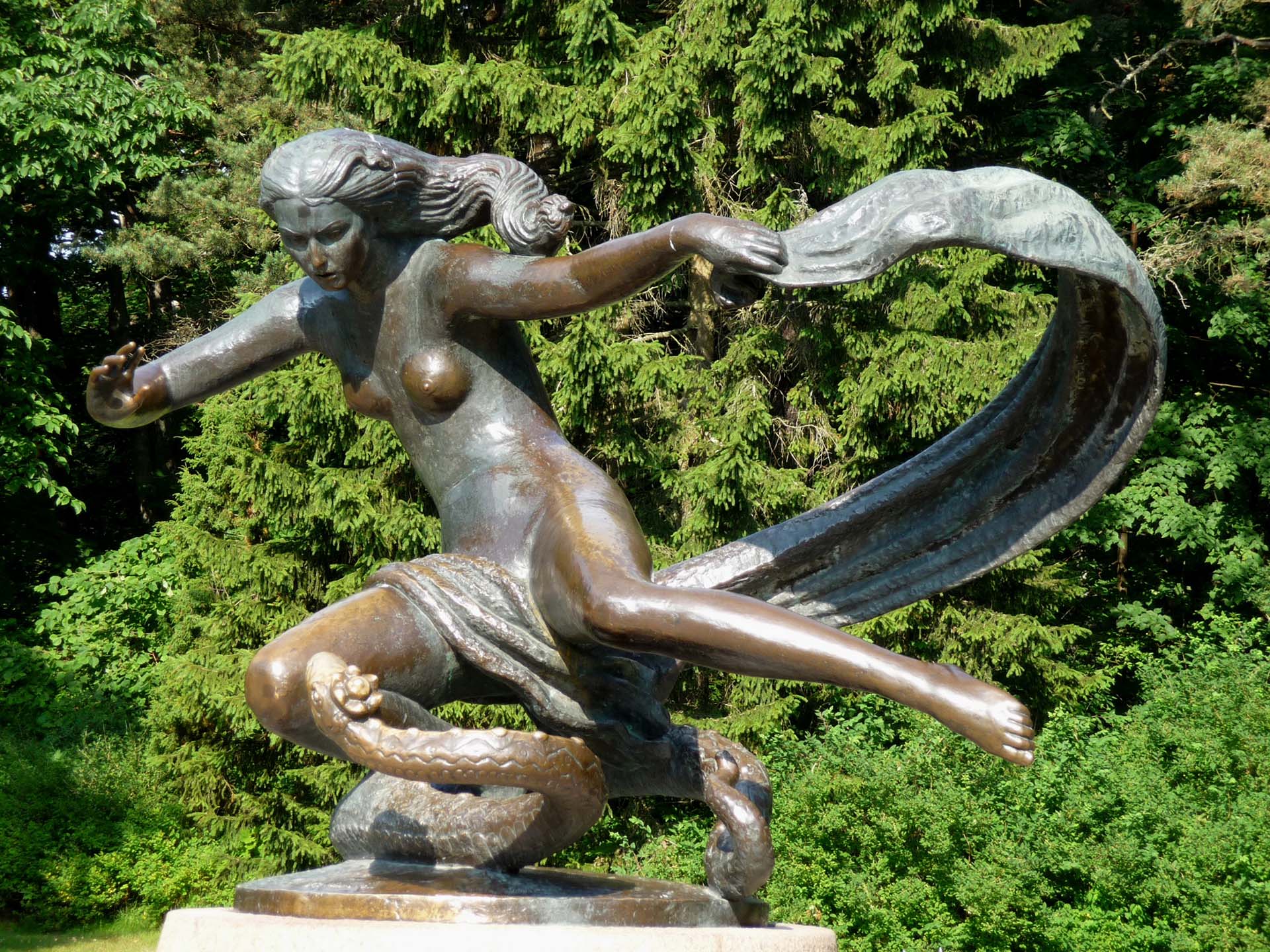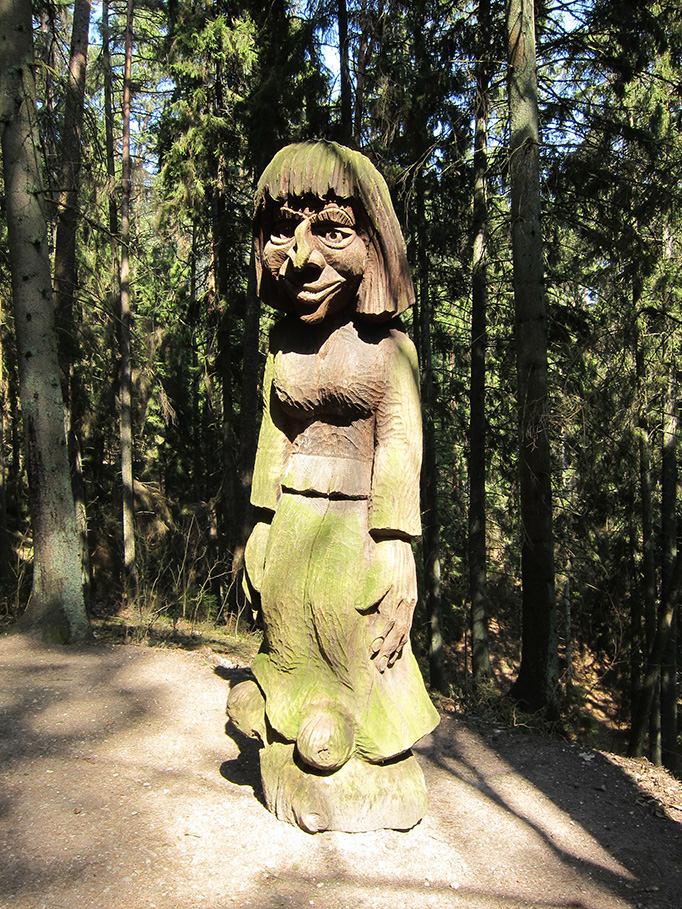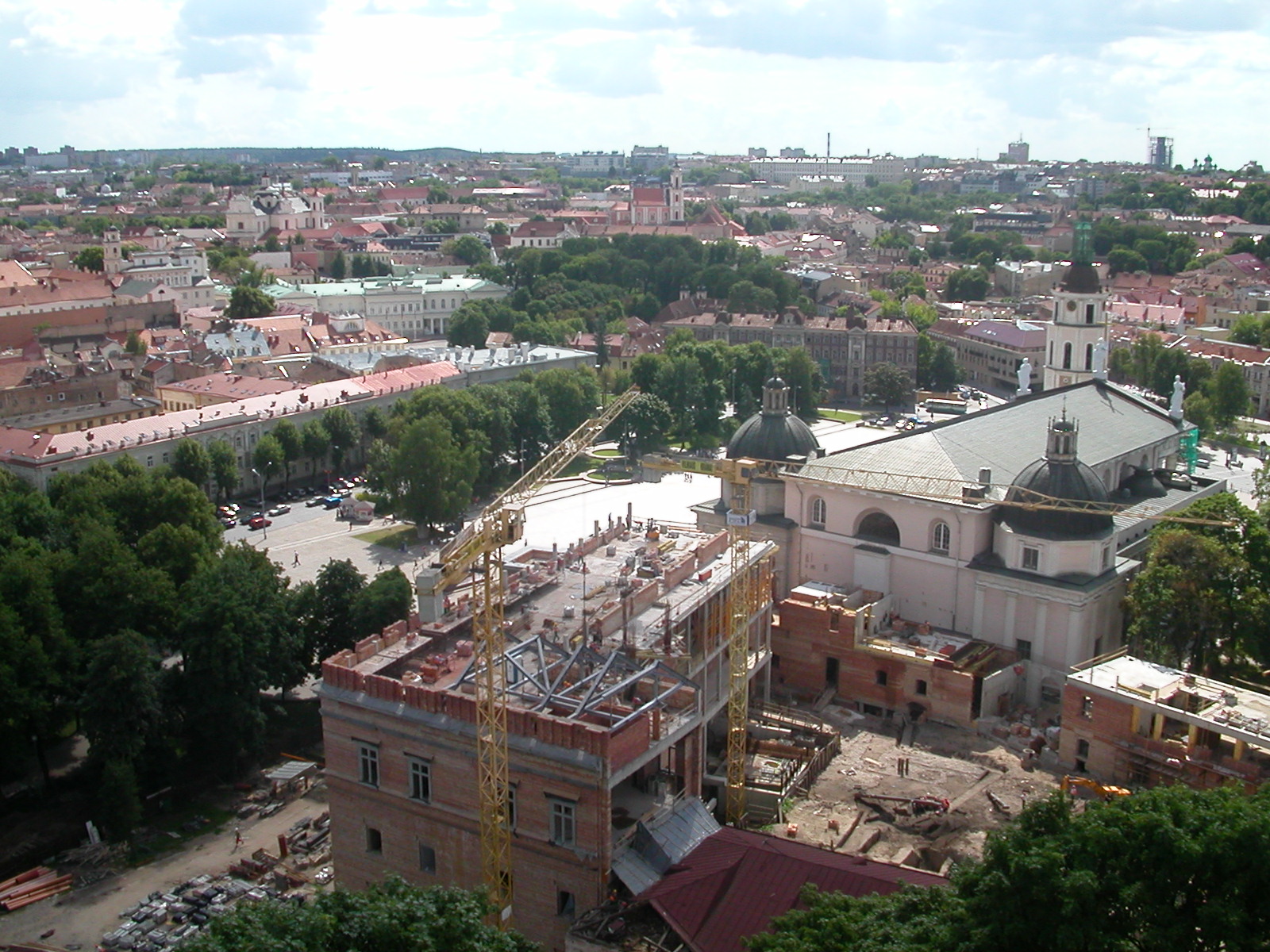Vilnius: Amongst Sacred Trees
The capital of Lithuania is not a big city – Vilnius has a population of 550,000 – but it enjoys some of the cleanest air of all urban agglomerations in Europe. Here’s the secret to how Vilnius is literally one of the greenest European cities.
Despite low levels of local industry, urban traffic is relatively dense and new office buildings – the false images of “development” – increasingly occupy more vertical and horizontal space. How does Vilnius have such low levels of CO₂, CO, and NOx in its air?
To use a ‘green’ cliché – trees are the answer. Local government has introduced various alternative policies, but behind these hides a certain pagan tradition of tree-hugging which is at the very core of the Lithuanian capital’s clean air.
One of the latest Green City Indexes made by Siemens revealed that Vilnius could be proud to have the cleanest air among European capitals
Arturas Zuokas, Mayor of Vilnius
Baltic Forest Myths
A fairy tale with the most references to ancient Baltic mythology revolves, fascinatingly, around trees. The Queen of Serpents, Eglė, spiritualizes and transforms humans into trees. It is not of great importance here how the narrative goes, but it is significant that as a punishment for betrayal Eglė turns her children and herself into trees. She turns her sons into strong trees – oak, ash and birch – and her daughter into a poplar. Eglė herself is transformed into a spruce.
Together with such myths, Lithuania is historically famous for its forests. All first-known written documents talk about Lithuania as a land of woodlands and swamps. This image prevailed until the 16th century and was again revived in the time of Romanticism. Lithuanians themselves believed that “the forest is the place where one can feel safe, where gods live”, as political scientist Jolanta Bielskiene from the Vilnius based think-tank DEMOS, Institute of Critical Thought, explains.

Lithuanians are intertwined with historic pagan rituals and beliefs that were built around the image of Tree of Life: roots go to the underworld; the trunk is our common world; and the top leafy branches are where Gods and souls of ancestors dwell. From the earliest historical records, forests had a status of sacred places in Lithuania and served as a powerful medium for talking to Gods. Lithuanian historians assert that there were many sacred forests where ordinary people were not allowed; they were places of ritual and sacred oaths where only priests and priestesses were able to enter.
People believed that trees could feel and that they lead a carnal life. Kristina Sadauskiene, editor-in-chief at the environmental magazine Ozonas, points out that Lithuanians still have the custom of planting an oak-tree for a newborn son and a lime tree for a daughter. Furthermore, Lithuanians believed that trees hosted the souls of the dead and again, as a spiritual remnant, during funerals people shed small fir branches and kindle on the road or place them on graves. These traditions live on in modern-day Lithuania and are the key to Vilnius’s clean air.
Urban Environmental Policies
It is important to link the clean air with some of the environmental policies of Vilnius’ mayor, Arturas Zuokas. He is a pro-business, neo-liberal and controversial politician, apparently preoccupied with urban ecology or at least with good public relations for embryonic green initiatives. It is therefore surprising that the clean air in the city is not fully determined by urban environmental policies. The mayor managed to convince us of this via an online interview: he has got nothing to do with air quality’s clean numbers in the Lithuanian capital.
Vilnius may not have an ‘Environmental Master Plan’, but the principles of city development are clear in other relevant documents, such as the General Plan until 2015 and Vilnius City Strategic Plan for years 2012-2020. They include principles of sustainable development, preservation of green areas and healthy environment creation. If Vilnius is a green city, it has clear objectives to save the best it has, says Mayor Zuokas.
For Eastern European capitals, air pollution is caused largely by urban traffic and a lack of green areas. The Vilnius municipality however is always thinking of ways to solve traffic problems. “We are investigating most modern and environmentally friendly ideas to implement into our public transport in the City Center as well as across the city,” claims Zuokas.

“Talking about air pollution, one of the latest Green City Indexes made by Siemens revealed that Vilnius could be proud to have the cleanest air among European capitals,” adds the mayor. Schemes that will help reduce traffic and air pollution in the city are also visible, such as the electric bike renting system in the City Center, which Vilnius was the first city in Europe to implement, and the building of new bypass roads.
Fundamentally, the air depends on a lot of green areas. Vingis Park (Vingio parkas), the largest green space in Vilnius is an actual secular forest that dates back some centuries. Excluding the amphitheater and some playful venues, the 162 hectares of the park is a genuine forest ecosystem. Zuokas plans to “preserve, develop and manage” the green spaces in Vilnius, as well as expand them. “In the near future we will renovate one of the oldest parks of the city – Sereikiskiu parkas, that is situated in the very heart of Vilnius – in the Old Town near the Gediminas Castle” Zuokas adds.
Lithuania’s Nature Culture
Incredible green belts around the city and all over Lithuania provide a holistic approach on how urban ecology is supported from the outside. Why are Lithuanians not chopping down their trees in an age when forests are ravaged? Does it have to do with environmental awareness or is the environment simply integral to Lithuania?

Forests are a defining dimension of Lithuanian landscape – urban or rural, natural or cultural. Sadauskiene says: “All our greenery is tightly rooted into our consciousness through songs and stories. Nature is alive in all our literature. Even contemporary writers sometimes have difficulties trying to escape it […] there is ‘moss as a soft cover’ and ‘tree by the gate where mother waits’, there is ‘tree on the hill’ and ‘forest where our brothers are hiding’ and eventually ‘sleeping’.”
All our greenery is tightly rooted into our consciousness through songs and stories.
Sadauskiene, Editor-in-Chief, Ozonas
Even during Soviet rule, trees were involved in the organized resistance. Partisans named themselves “miško broliai” (forest brothers) as their hidaways were amongst the trees. Bielskiene describes the forest as a provider of warmth and a place of survival for Lithuanians, but also for culture. “Lithuanian art is still full of motives of forest and trees, especially in local sculpture”.
Growing More Forests
Almost 33% of Lithuania is covered in forests; this is an increase from 31% during the Soviet times. Now, landowners are given financial incentives to plant trees on their land from the EU, in areas where fertility rate is less than 30%. “Quite a lot of Lithuanians use this incentive happily – the EU pays for the costs of the trees, the planting process, and finances 5 years of expert care of the growing young forest,” explains Jokūbas Margenis, an experienced and dedicated forest engineer, who has been working in forestry for 50 years.
These EU subsidies have resulted in farm land becoming forest land, with some farmers abandoning farming activities and turning to growing forests instead. A concern for Bielskiene is that “there are large compensations for growing oak, most of them start planting only oak. However, the biggest problem now is the loss of ash trees”.
All the green in town or around is good, but we cannot just follow our daily lifestyle hoping that those trees will compensate for all the harm we do…
Sadauskiene, Editor-in-Chief, Ozonas
The forests are not necessarily centuries old, but planting is. Margenis explains how many of the forests were destroyed during World War II and the Soviet era, when deforestation was allowed. After the war, young forests flourished and now they are better protected. If endangered species are found, for example, a so-called “forest’s core residence” is established and absolutely no forestry activity is allowed in that area.
Size Matters
Lithuania is a small country and as Sadauskiene warns “size matters”. Consequently, Vilnius is small compared to other capitals of Europe. It is commonly believed that in comparison, size allowed Vilnius to jump to the top green rankings for cleanest air. This raises a question as to whether Vilnius’s green policy can be transplanted to other cities across the continent. “Yes, one could say clean air numbers are reached because of the 33% of forests that cover Lithuania, but also, Lithuania has almost no industry,” concludes Margenis.

Just like all other countries across Europe, Sadauskiene highlights how people in Lithuania choose to use cars over public transport. Except for in Vilnius, there are no public cycling schemes in Lithuania’s towns or campaign’s to improve public transport. She believes that the reduced size of the country and of its capital is the main driver of clean air: “all the green in town or around is good, but we cannot just follow our daily lifestyle hoping that those trees will compensate for all the harm we do…”
All Lithuanian forests, state-owned or private, are in really very good shape. They are among the finest in Europe and they contribute substantially to the national budget through taxes. According to the Lithuanian Directorate General of State Forests, the value of Lithuanian forests has grown consistently. However, despite different challenges and considerations, clean air, a fantastic landscape, improved public health, and an innate respect for a vivid treasure surpass dull data related to urban ecology in Vilnius or any other Lithuanian town. This cultural approach to residing amongst forests and urban ecology merits more praise and emulation.
Take a walk in Vingis Park at dusk.